《Journal of Materials Science Technology》The aims of this journal are to enhance the international exchange of scientific activities. It reports principally the achievements of materials science and engineering all over the world, putting the stress on the original research papers, review articles invited by editor, letters, research notes with novelty as well as brief of scientific achievement, covering a broad spectrum of materials science and technology, encompassing: metallic materials, inorganic nonmetallic materials, composite materials.
《Journal of Materials Science Technology》登世界各国的具有创新性和较高学术水平的原始性论文,该杂志已被誉为看中国材料研究发展趋势的一个窗口。
letters、review articles、original papers、research notes、brief scientifie achievement
1.Submission of Papers
Electronic files of MS Word and PDF are acceptable. Submission of a manuscript must be the original work of the author(s) and has not been published elsewhere or under consideration for another publication, or a substantially similar form in any orhter language.Authors are encouraged to recommend three to five individuals (including their research fields, e-mail, phone numbers and addresses) who are qualified to serve as referees for their paper.2.Manuscript Preparation
All manuscripts should be written in English. Letters are generally no more than three journal pages. Research articles and review articles have no page limit. The supporting organization and the grant number should be given in the section "ACKNOWLEDGEMENT(S)" of the manuscript.
3.Title
The title of the paper should be concise but informative.
4.Author name(s)
A list of all authors, as well as corresponding addresses, should be provided on the title page. Authors’ names should be given in a consistent form on all publications to facilitate indexing. It will be better if the technical titles, fax number(s), e-mail address(es), and telephone number(s) are all provided.
5.Abstract
The abstract should be no longer than 500 words. It should be informative, without descriptive words or citations, and contain the major conclusions and quantitative results or other significant items in the paper. Together with the title, the abstract must be adequate as an index to all the subjects treated in the paper, and will be used as a base for indexing.
6.Mathematics
Variables should appear in italic text. Vectors should appear in bold italic text. Capital and lower-case letters should be distinguished clearly where there could be confusion. Fractional exponents should be used to avoid root signs. Extra symbols should be introduced to avoid complicated exponents or where it is necessary to repeat a complicated expression a number of times. The slash (/) should be used wherever possible for fractions. Mathematical derivations that are easily found elsewhere in the literature should not be used.
7.Notation
Notation must be legible, clear, compact, and consistent with standard usage. All unusual symbols whose identity may not be obvious, including subscript or superscript, must be made comprehensible. Physical and mathematical variables should be in italic, vectors in boldface. Units, abbreviations and special functions should be upright. Please add notes to explain any other special symbols.
8.Figures
Figures should be original graphs (*.tif) with high contrast, suitable for immediate reproduction, typed on separate sheets and identified by its number. Width of an image should be sized to 6.5 cm for one column, 13.5 cm for full columns; and a maximum width is 15 cm for full page. In the figures, the main lines should be about 0.3 mm in width, and the assistant lines 0.15 mm. Notations in the figures should be distinct and consistent with the same ones in the text, and their font size will be 8-10 pt. Line drawings and graphs must have exported resolution of at least 1200 dpi. Photographs and micrographs must have resolution of at least 300 dpi (600 dpi if there is text or line art in the figure). Please use LZW compression. The positions of figures should be marked in the text by boxes of a suitable size. Each figure should have its own caption.
9.Tables
Tables, numbered in order of appearance, should be appended on separate sheets and identified with appropriate titles. The table title, which should be brief, goes above the table. A detailed description of its contents or table footnotes should be given directly below the body of the table.
10.References
References must be published work, and numbered consecutively in order of their first citation. References should be listed individually at the end of the text and indicated in the text with a superscript number in square brackets. All of the authors, as well as the titles of the reference articles should be given. Here are some examples of how to set the most common reference types:
Journals:
F. Huang, N.R. Tao, L. Lu, Effects of Strain Rate and Deformation Temperature on Microstructures and Hardness in Plastically Deformed Pure Aluminum, J. Mater. Sci. Technol. 27 (2011) 1–7.
Books:
W. Strunk Jr., E.B. White, The Elements of Style, third ed., Macmillan, New York, 1979.
J.Q. Yu, Atlas of Binary Alloys Phase Diagram, Shanghai Scientific and Technical Publishers, Shanghai, 1983, pp. 334–339. (in Chinese)
Conference proceedings:
G.R. Mettam, L.B. Adams, in: B.S. Jones, R.Z. Smith (Eds.), Introduction to the Electronic Age, E-Publishing, Inc., New York, 1994, pp. 281–304.
Patents:
C.G. Bai, L. Murr, W. Smith, A Novel Method for Preparing Al Base MMC, US Patent, No. 200101133, 2001.
Dissertations:
K.L. Corwin, A Circularly-polarized Optical Dipole Trap and Other Developments in Laser Trapping of Atoms, Ph.D. Thesis, University of Colorado, 1999.
Online references:
H.R. Sheikh, Z. Wang, L. Cormack, A.C. Bovik, Live Image Quality Assessment Database Release 2, September 8, 2006.
11.Proofs
Authors will receive a letter informing them whether the manuscript is accepted or rejected in three months. Authors should return their revised manuscript to editorial office within one month on receipt. When an article has been amended in compliance with the comments of referee(s), an electronic file of the final version should be sent with the revised manuscript. Proofs will be sent to the authors and should be returned preferably within 48 hours to avoid publication delays.
12.Copyright
As the manuscript has been accepted, all authors should transfer the copyright of the article, including that of the printing and on-line version, to the publisher. All authors must sign the Copyright Transfer Agreement before the article can be published. This transfer will ensure the widest possible dissemination of information.
2012 2013 2014 2015 2016 2017 2018 2019 2020 2021 2022
本刊文章发表的年份
在2012年的被引次数
被本刊自己引用的次数
被引次数的累积百分比
本刊文章发表的年份
在2013年的被引次数
被本刊自己引用的次数
被引次数的累积百分比
本刊文章发表的年份
在2014年的被引次数
被本刊自己引用的次数
被引次数的累积百分比
本刊文章发表的年份
在2015年的被引次数
被本刊自己引用的次数
被引次数的累积百分比
本刊文章发表的年份
在2016年的被引次数
被本刊自己引用的次数
被引次数的累积百分比
本刊文章发表的年份
在2017年的被引次数
被本刊自己引用的次数
被引次数的累积百分比
本刊文章发表的年份
在2018年的被引次数
被本刊自己引用的次数
被引次数的累积百分比
本刊文章发表的年份
在2019年的被引次数
被本刊自己引用的次数
被引次数的累积百分比
本刊文章发表的年份
在2020年的被引次数
被本刊自己引用的次数
被引次数的累积百分比
本刊文章发表的年份
在2021年的被引次数
被本刊自己引用的次数
被引次数的累积百分比
本刊文章发表的年份
在2022年的被引次数
被本刊自己引用的次数
被引次数的累积百分比
累积被引百分比:是用于评估期刊影响力的学术指标,是指在某一领域或学科中,某篇论文被后续的论文引用的次数占该领域或学科所有论文被引用的总次数的比例。
他刊引用次数:指在某一期刊中发表的论文被其他期刊的论文所引用的次数。该指标能够反映出该期刊的学术影响力和知名度。
本刊引用次数:被称为自引率,是指该期刊全部被引次数中,被该刊本身引用次数所占的比例。他刊引用次数和本刊引用次数一同使用,可以更全面地评估期刊的影响力和学术地位。
期刊被引半衰期:也叫“cited half-life”,是一个衡量期刊影响力的重要指标,这个指标的值越低,说明该期刊的文章越新,反之则说明该期刊的文章比较老旧。
期刊引用半衰期:指某一期刊平均引用多久以前的论文。计算方法是从当年往前累计,当引用的论文篇数达到全部的50%时,该篇论文的出版年到当年的间隔年数即为此期刊的引用半衰期。
影响因子:指该期刊近两年文献的平均被引用率,即该期刊前两年论文在评价当年每篇论文被引用的平均次数。影响因子分为复合影响因子与综合影响因子,两者都和SCI期刊的影响因子统计方法相同。
被引次数:指某篇论文在其他论文中被引用的次数,这是衡量该篇论文影响力的一个重要指标。需要明确的是,被引次数并不完全等同于论文的质量或价值。高被引论文虽然通常代表着高质量的研究成果,但也与研究主题的重要性、论文的创新性、论文的研究方法等内在因素,以及论文的可获得性、期刊的声誉等多种外在因素有关。
发文量:又称载文量,是指一本期刊在一定时间内发表的文章数量。期刊的发文量是一个重要的参考指标。如果一本期刊发文量太小,可能会让人觉得这本期刊受众较小众,或者为了提高影响因子而刻意降低发文量。然而,如果发文量过大,也需要警惕,因为这可能影响到论文的质量。
平均引文率:又称篇均引文量,是指某本期刊中带有引文的论文数量与该期刊发表论文总数的比例。这个指标可以反映出该期刊引用文献的综合能力和引文的覆盖面。
| 一级发文领域名称 | 发文量 | 被引量 |
| 一般工业技术 | 4831 | 12091 |
| 金属学及工艺 | 4126 | 14378 |
| 理学 | 1154 | 1830 |
| 化学工程 | 1034 | 2471 |
| 电气工程 | 490 | 891 |
| 医药卫生 | 247 | 607 |
| 自动化与计算机技术 | 181 | 398 |
| 电子电信 | 179 | 342 |
| 环境科学与工程 | 125 | 281 |
| 文化科学 | 113 | 60 |
| 二级发文领域名称 | 发文量 | 被引量 |
| 一般工业技术 / 材料科学与工... | 4697 | 11749 |
| 金属学及工艺 / 金属学 | 3346 | 10885 |
| 金属学及工艺 / 金属材料 | 1592 | 5635 |
| 理学 / 化学 | 873 | 1427 |
| 金属学及工艺 / 合金 | 850 | 2128 |
| 金属学及工艺 / 金属表面处理 | 489 | 2204 |
| 理学 / 物理化学 | 387 | 788 |
| 理学 / 无机化学 | 367 | 481 |
| 化学工程 / 硅酸盐工业 | 323 | 916 |
| 化学工程 / 无机化工 | 317 | 507 |
追求权威的工作导向,以高品位的学术理论、昆新的科技信息、浓郁的市场特色、丰富的科普知识和广泛的国际交流为主题,以新颖的编排风格宣传报道当代国土资源及相关领域的重大选题,为国土资源工作提供优秀舆论服务。
Journal of Materials Science Technology杂志的审稿速度是很快的,外审专家给我提了5条意见。和导师商量了一下,觉得外审专家是知道我这个方向的,但是不是很懂我的意思,因为在摘要我已经把创新点就已经写的很清楚,但是专家说我的不够创新。不过提的一条意见还是很有用的,感谢!
很不错,接电话的编辑态度也很好,回答问题非常的耐心、热情。中间有过两次的回修意见,在老师的指导下也被收录了。个人觉得只要有创新,写的有亮点还是很容易中的。
杂志编辑很负责,整个投稿流程节奏非常快。个人感觉这个期刊还是不错的。2位审稿人都比较专业,有个审稿人的一些意见还是非常有帮助,非常有针对性。速度也比较快。推荐大家投稿。
在去年投过这个期刊,当时的文章是和老外合作的,他推荐投递该期刊,推荐审稿人什么的都是他做的,可能文章送到推荐审稿人手里了,很快就给出了结果,也很正面,修改之后第二天接收。
若用户需要出版服务,请联系出版商,地址:72 Wenhua Road, Shenhe District, Shenyang 110016, China,邮编:110016。

SCI期刊
人气 13463 评论 3

CSCD期刊、统计源期刊
人气 12703 评论 3
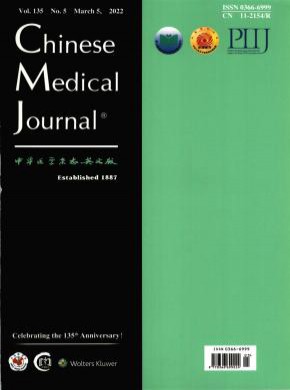
SCI期刊、CSCD期刊、统计源期刊
人气 12668 评论 8

SCI期刊、CSCD期刊、统计源期刊
人气 10703 评论 3
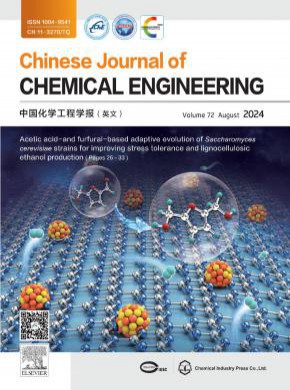
SCI期刊、CSCD期刊、统计源期刊
人气 10601 评论 5
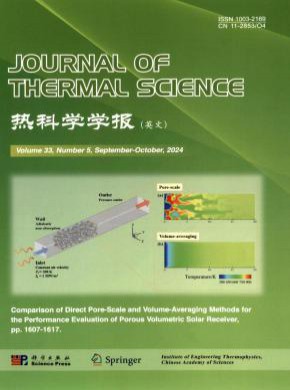
SCI期刊、CSCD期刊
人气 10174 评论 2
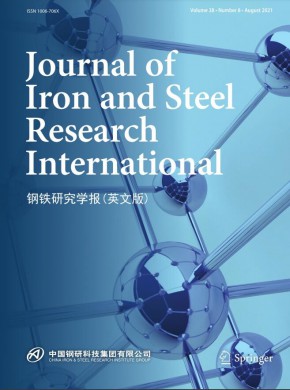
SCI期刊、CSCD期刊、统计源期刊
人气 10113 评论 2
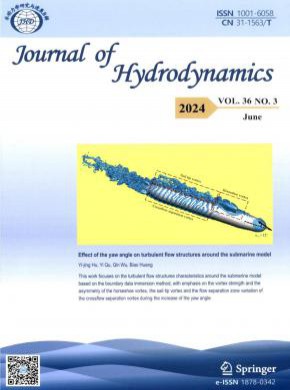
SCI期刊、CSCD期刊
人气 9933 评论 1